MXA RACE TEST: 2019 YZ250X CROSS-COUNTRY
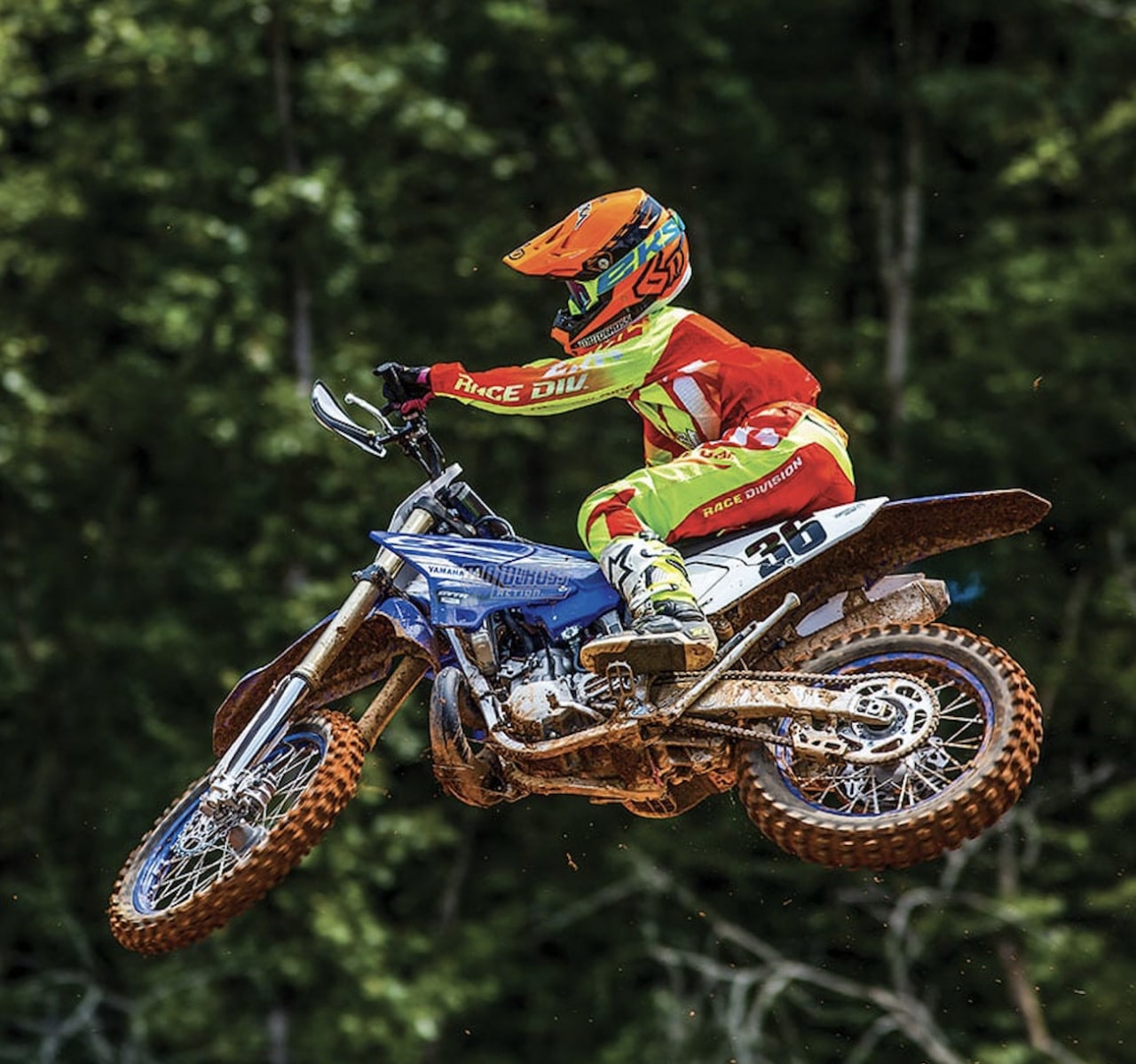
Q: IS THE 2019 YAMAHA YZ250X BETTER THAN THE 2016 YZ250X?
A: You jest. The 2019 Yamaha YZ250X is based on the YZ250, which is famous for getting a minimal number of updates over its 13-year lifespan. Given that the Yamaha YZ250X cross-country bike was first introduced in 2016, we never expected it to get any actual updates. The YZ250X relied on Yamaha’s YZ250 R&D department to bring about change—and that department went to lunch a decade ago and never came back. However, there was one change in the last four years of YZ250X development. In 2017, the front brake rotor was upgraded from 250mm to 270mm.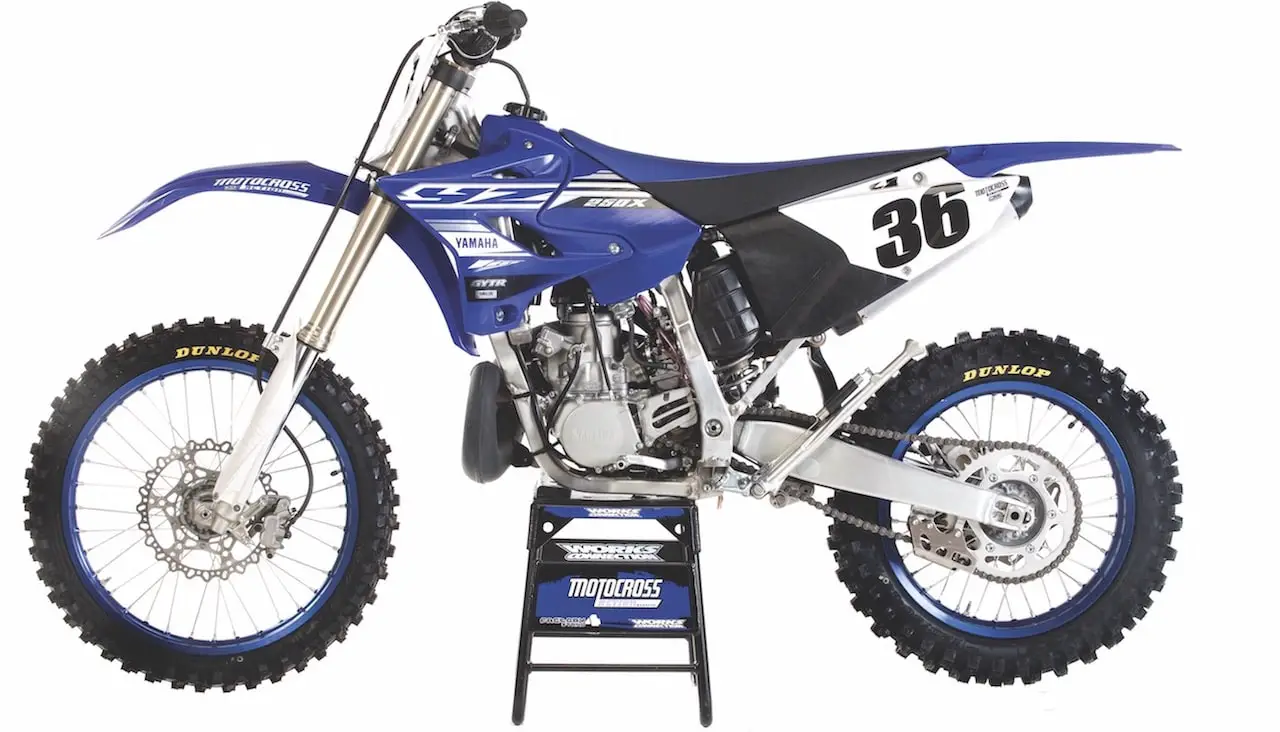
Q: HOW MUCH DOES THE 2019 YAMAHA YZ250X COST?
A: Four years ago the original YZ250X retailed for $7390. With currency fluctuations and inflation adjustments, the 2019 Yamaha YZ250 costs $7399, while the 2019 YZ250X costs $7499.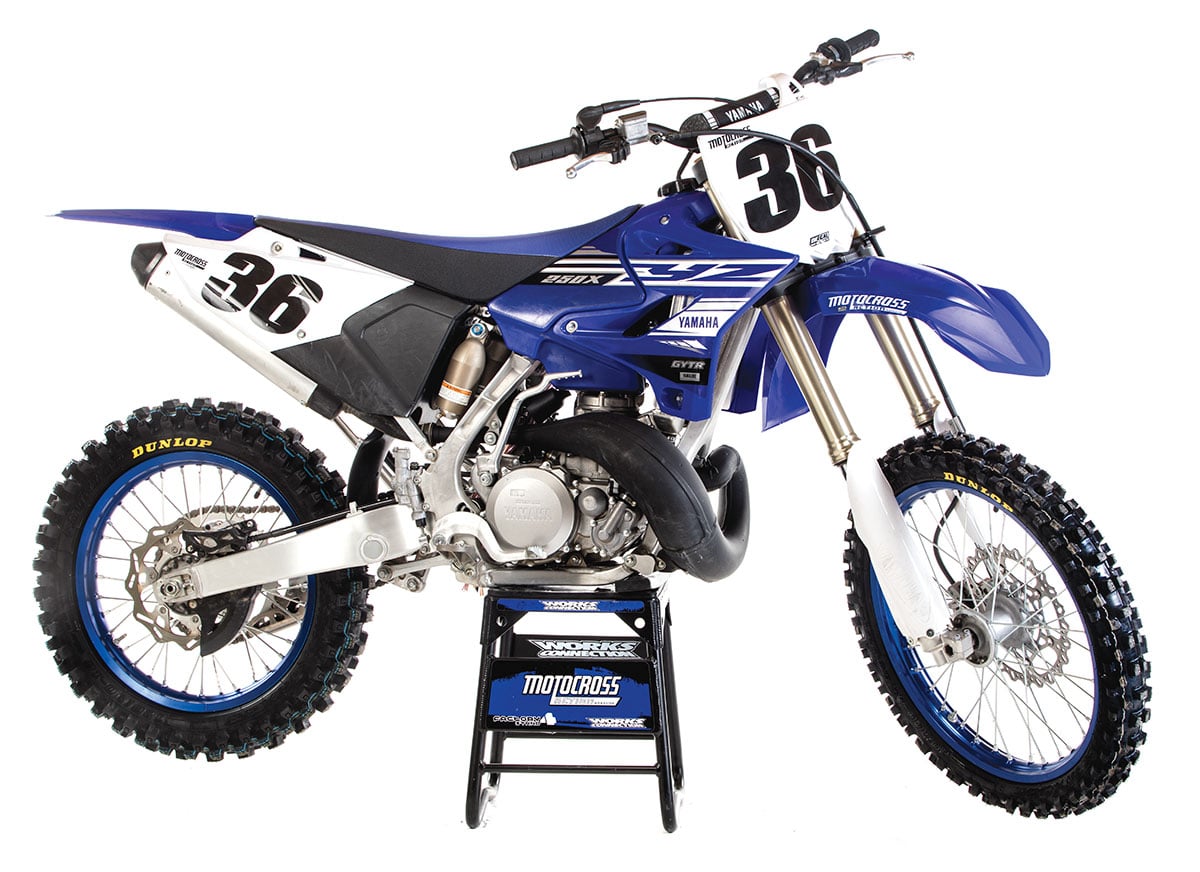 The YZ250X’s Kayaba SSS forks have the same spring rate in them as the YZ250 motocross version. The difference is the YZ250X’s softer valving.
The YZ250X’s Kayaba SSS forks have the same spring rate in them as the YZ250 motocross version. The difference is the YZ250X’s softer valving.
Q: WHY NOT JUST CONVERT A YZ250 TO A YZ250X BY YOURSELF?
A: If you are interested in converting a YZ250 into a YZ250X, there are going to be a couple hurdles you will have to leap over. Here is a quick compilation of what makes the YZ-X more off-road-worthy than a plain Jane YZ250.
(1) Clutch. The clutch spring rate has been reduced by 10 percent for easier lever pressure.
(2) Suspension. The YZ250X offers the same industry-leading Kayaba SSS components as the YZ250, including the same spring rates front (4.3 N/m) and rear (48 N/m). The only thing that’s changed is that the internal shim stacks have been valved softer for better trail compliance.
(3) Gas tank. The X has the same fuel capacity as the YZ250, but the X offers a reserve fuel valve that kicks in when 0.5 gallons are left in the tank.
(4) Rear wheel. A terrain-specific, 18-inch rear wheel with Dunlop Geomax AT81 off-road terrain tires was spec’ed on the YZ250X for better grip on rocks, roots and muddy water crossings.
(5) YPVS timing. The Yamaha Power Valve System’s (YPVS) governor spring and preload settings are softer to open sooner.
(6) Bolt-on parts. The X comes standard with a D.I.D. O-ring chain and spring-loaded aluminum side stand.
(7) CDI. The CDI timing has been delayed in the mid-to-high rpm for a broader and gentler pull.
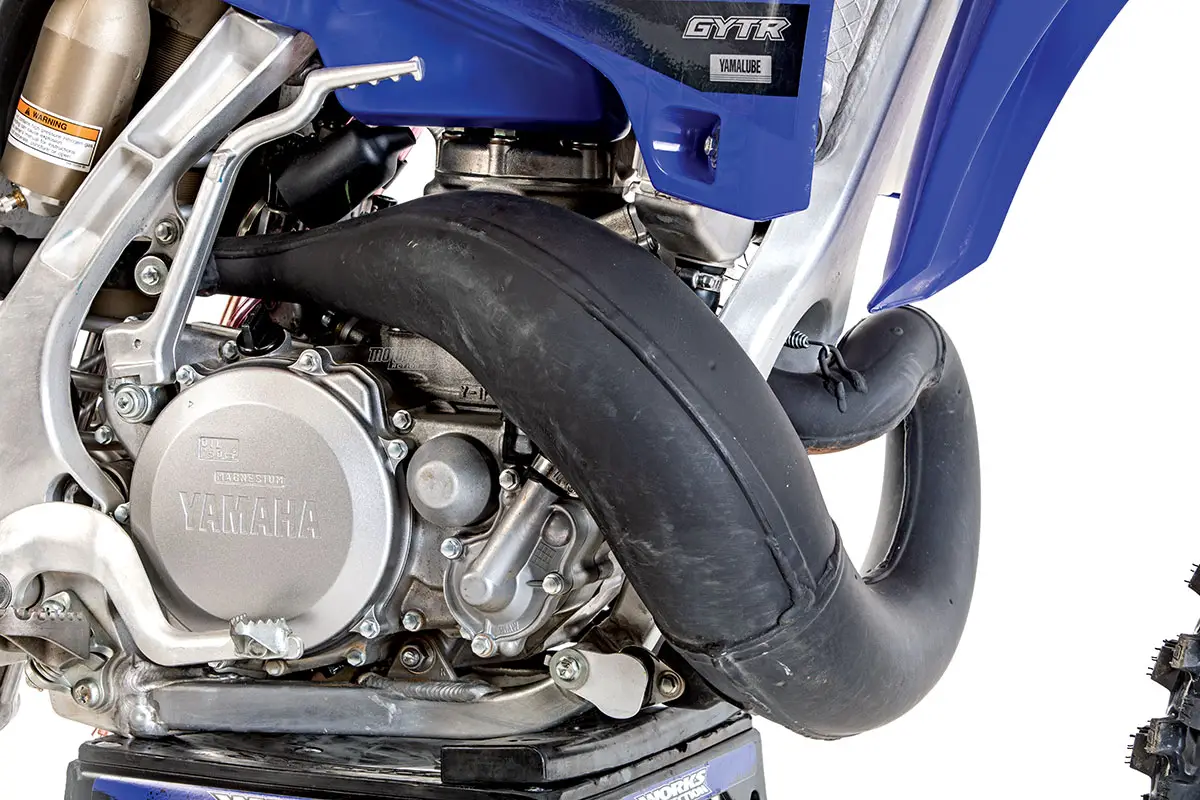
(8) Pipe. The YZ250X expansion chamber is different from the YZ250 pipe. It is 35mm narrower to help it keep the vulnerable cones away from tree stumps and rocks.
(9) Cylinder head and cylinder. The head volume was increased by 2.1cc from 21.5cc to 23.6cc. This added volume reduced the compression ratio from 8.9:1 to 7.9:1. The exhaust port height was raised 0.5mm, and the power-valve shape was updated to match the exhaust port height.
(10) Gear ratios. The Yamaha YZ250X comes with a wide-ratio, off-road savvy gearbox. First and second gears on the YZ250X are identical to first and second on the YZ250 motocross transmission. Third gear on the YZ250X is actually lower than on the YZ250 (the equivalent of adding one tooth to the rear sprocket), meaning that the gap between second and third is closer, which we wish Yamaha would do with the YZ250 motocross gearbox. Fourth gear on the YZ250X is taller than on the YZ250 (the equivalent of two teeth fewer on the YZ250 rear sprocket). And with the lower third gear ratio, the jump between third and fourth gears is larger. The YZ250X’s fifth gear is so tall that it is equivalent to dropping five teeth on the YZ250 rear sprocket.
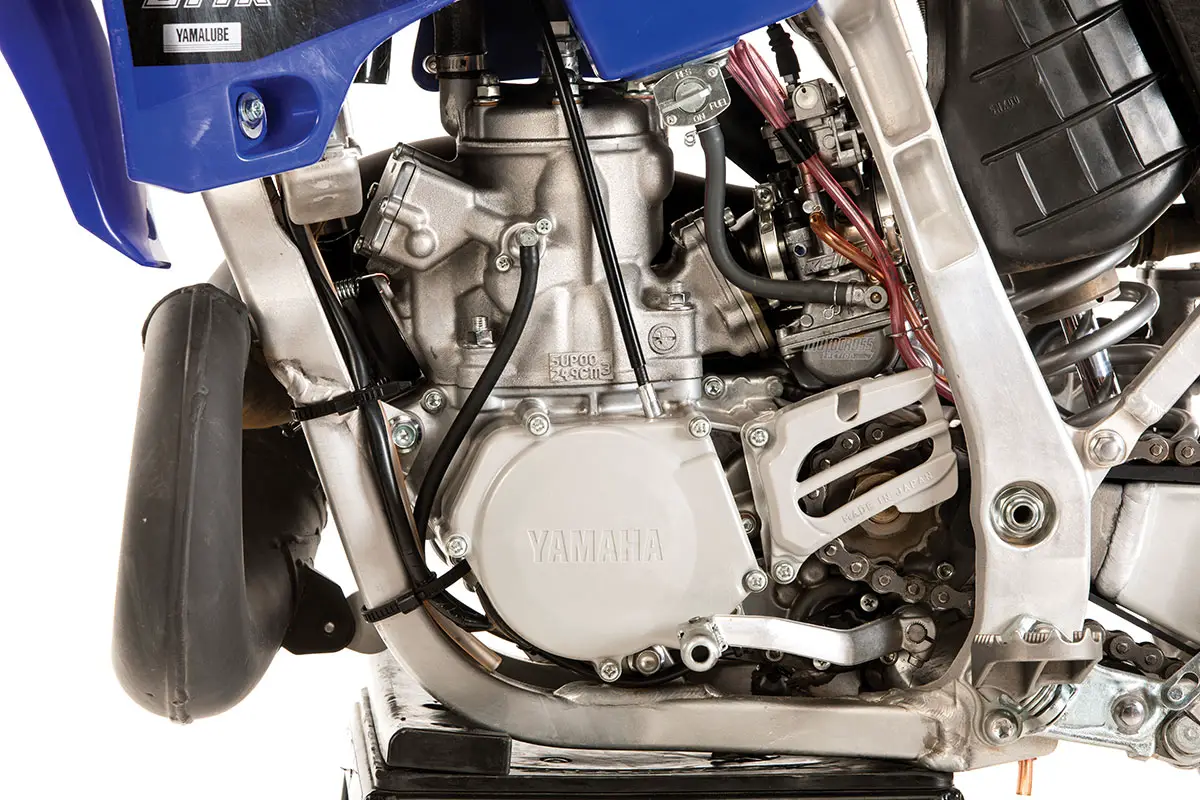
Q: IS THE 2019 YZ250X FASTER THAN THE 2019 YZ250?
A: No. In terms of pure speed and horsepower, Yamaha’s engineers weren’t looking to build a fire-breather. Instead, the YZ250X gives up brute strength with its lower compression ratio and milder mapping for a more usable two-stroke style of power.
Q: HOW WAS THE YZ250X ON OFFROAD TERRAIN?-
A: The 2019 Yamaha YZ250X is designed as a jack-of-all-trades dirt bike. It is possible to race GNCC-style races, West Coast GPs and ride trails to your heart’s content—and then take the YZ250X to the local motocross track and spin laps on it. But, understand that although the YZ250X is based on the YZ250 motocross bike, its focus is offroad, not motocross. Every MXA test rider loved the bike on trails. Its perky low-to-mid powerband was great for tight trails and big hills. For more open trial riding, we could just click it into fourth or fifth and cruise. The softer suspension absorbed rocks without deflection and was well-planted on slick terrain. There wasn’t much not to like about this bike offroad.
Q: CAN YOU RACE MOTOCROSS ON A 2019 YAMAHA YZ250X?
A: Yes. The milder hit and tractable pull of the engine, along with the ultra-plush suspension, make the YZ250X a decent motocross bike, especially for Novices, Vets, and riders who want to do double- or triple-duty on the same bike. One caveat: if you buy a YZ250X and port the cylinder, mill the head and add an aftermarket exhaust, you might as well have bought a YZ250 and saved $100.
Q: HOW SHOULD YOU GEAR IT FOR MOTOCROSS RACING?
A: Most MXA test riders opted for the stock 14/50 gearing for motocross and off-road combined. It was just easier to use, and the penalty wasn’t too great in either discipline; however, there were MXA test riders who went to a 51-tooth rear sprocket. They were willing to live with tighter gaps between first, second and third, because it gave them more drive to get into fourth gear without falling off the pipe. This made the powerband more aggressive.

Q: HOW DID WE LIKE THE OFF-ROAD SUSPENSION SETTINGS FOR MOTOCROSS?
A: No surprise. It was soft, but we already figured it would be. It rode low in the stroke and had a harsh feeling on the consecutive chatter of a motocross track. But, the great thing is that it never felt like it bottomed. We did a Band-Aid fix that made all the difference in the world. We added 10cc of oil to each fork leg, which helped keep the forks out of the harshest part of the stroke. Yes, it was too soft for Pro riders or tracks with big jumps, but we were still able to cut competitive lap times on the YZ250X. And many of our Vet test riders felt that the YZ250X suspension setup favored their speed more than the YZ250 forks.
Q: WHAT DID WE HATE?
A: The hate list:
(1) Gearbox. From first to third gear, we liked the YZ250X transmission’s gear ratios better than the stock YZ250 gearbox, but when we were in fourth gear or higher, the YZ250 gearbox was much better suited to riding on off-road. In an offroad setting, the very tall fourth and fifth gears were handy to have. A large number of our test riders never got to fifth gear. It is way up there.
(2) Eighteen-inch rear wheel. We aren’t opposed to the YZ250X’s 18-inch rear wheel. It has a bigger footprint, plusher sidewalls and better hookup. But, a large number of X riders want to mount a 19-inch rear wheel. It can be done, but it isn’t a simple swap. The YZ250X comes with a 22mm rear axle, while the YZ250’s 19-inch rear wheel has a 25mm axle. Buying the axle, wheel spacers, brake carrier and axle blocks can get expensive. The best solution is to buy a 19-inch rim and longer spokes (YZ250 two-stroke spokes work) and lace the rim and spokes to the stock YZ250X hub.
(3) Gas tank. In a cross-country race or on a long trail ride, the YZ250X will have a hard time completing a 40-mile loop without running out of gas. There are oversized aftermarket gas tanks available.
(4) Clutch. It should be noted that we run stiffer clutch springs on our YZ250 two-strokes, so we were less than enamored by the 10-percent-softer clutch springs on the identical clutch in the YZ250X.
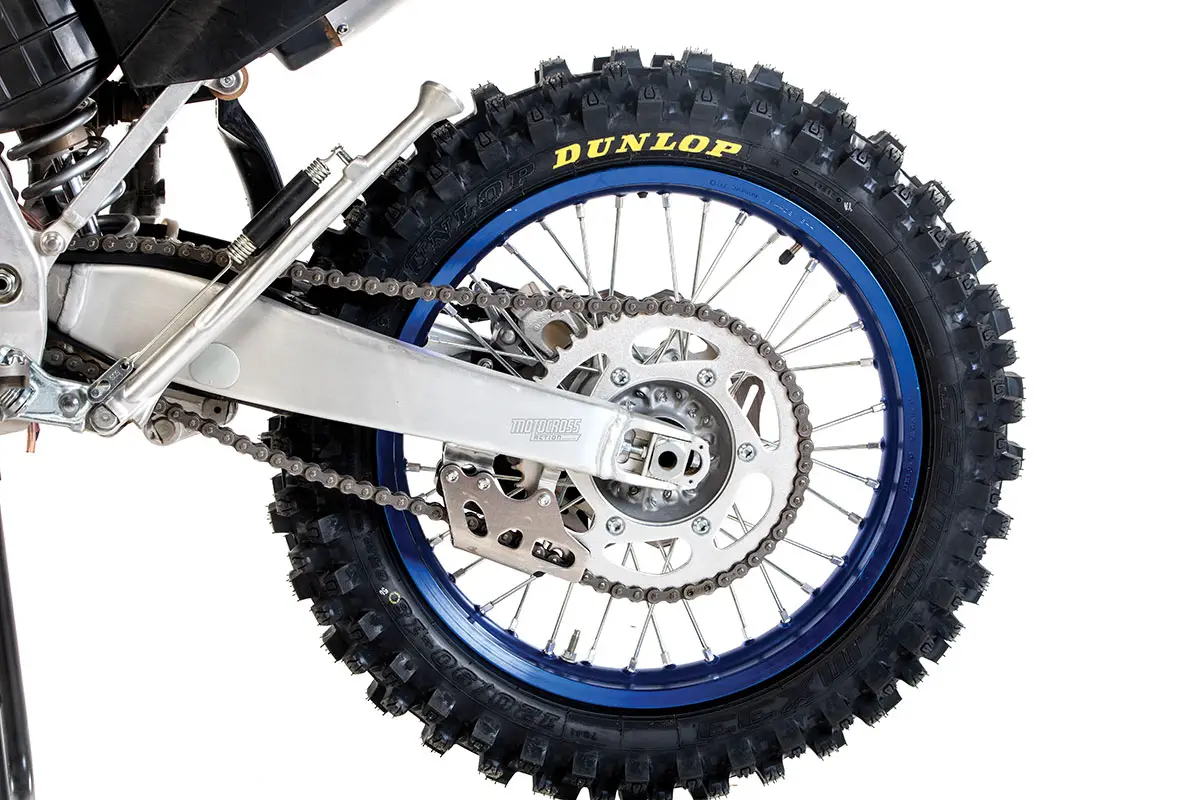
Q: WHAT DID WE LIKE?
A: The like list:
(1) Seat height. The YZ250X has a 1-inch-lower seat height when compared to the YZ250 (38.2 inches versus 39.1 inches). Given that the YZ250X uses the same frame, wheels, suspension components, shock linkage and plastic, we don’t know where the inch came from.
(2) Maintenance. Anybody with a modicum of mechanical skill can keep a YZ250 two-stroke running.
(3) Parts. Even if the YZ250 parts were to cost the same as their four-stroke nephews (which they don’t), there are a lot fewer of them to buy. The MXA wrecking crew doesn’t believe that two-strokes are more reliable than four-strokes. It is just that when unreliability rears its ugly head, a two-stroke owner spends less dough on pistons, rings and gaskets—and can do the work himself.
(4) Tires. The YZ250X comes with Dunlop AT-81 offroad tires front and rear. These are workable off-road tires and can cover a wide range of terrain.
(5) Third gear. Bringing third gear closer to second has been on our wish list on the YZ for many years now. Now that our prayers have been answered on the X, we hope to see the change on the YZ sometime in the near future.
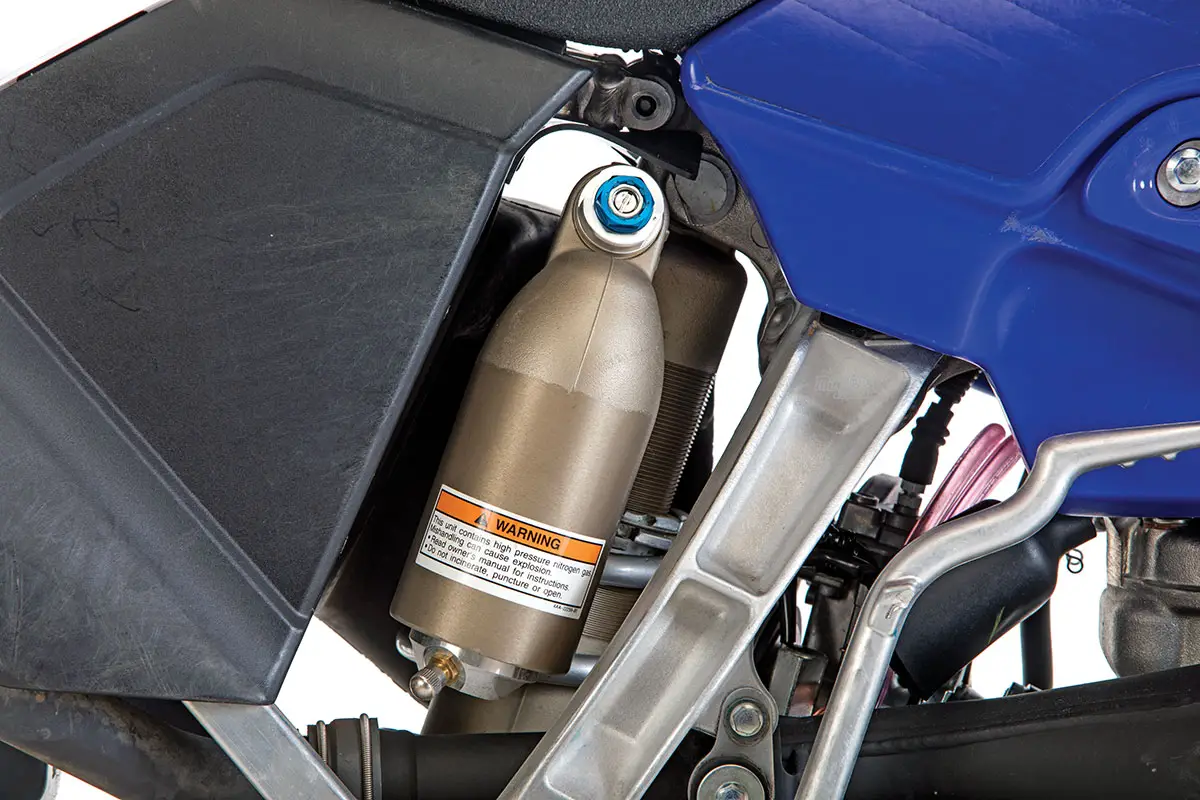
Q: WHAT DO WE REALLY THINK?
A: The 2019 Yamaha YZ250X is billed as an off-road machine, but Yamaha’s business plan did not include going whole hog to achieve it. Without a six-speed gearbox or a larger fuel tank, it is immediately handicapped for all types of technical cross-country riding or day-long trail rides. If you are a pure offroad rider or hardcore motocrosser, there are better bikes for you. The YZ250X isn’t the best 250cc two-stroke offroad racer or the best 250cc two-stroke motocross bike—but it might be the best all-around 250 two-stroke for a guy who wants to ride offroad this weekend and at the track next weekend.

MXA’S YAMAHA YZ250X SETUP SPECS
This is how we set up our 2019 Yamaha YZ250X for the motocross track (stock settings are in parentheses). We offer it as a guide to help you find your own sweet spot.
KAYABA SSS FORK SETTINGS
Most MXA test riders stayed close to the stock clicker settings (after we added 10cc of oil to each fork leg), with the faster riders going in two to five clicks. For hard-core racing, we ran this setup on the 2019 Yamaha YZ250X (stock clickers are in parentheses).
Spring rate: 4.3N/mm
Compression: 9 clicks out (13 clicks out)
Rebound: 10 clicks out
Notes: The SSS components did not feel as if they were bottoming out, which was a huge confidence booster for all conditions. For motocross, we added 10cc of oil to each fork leg, which is exactly what we did on our Yamaha YZ250FX four-stroke.
KAYABA SSS SHOCK SETTINGS
Our testers liked the movement on the shock, but felt that it was a bit under-damped. They went in a few clicks with the rebound and compression to slow it down and keep it up in the stroke. For hard-core racing, we recommend this shock setup for the 2019 Yamaha YZ250X (stock specs are in parentheses):
Spring rate: 48N/mm
Race sag: 105mm
Hi-compression: 1-3/4 turns (1-1/2 turns out)
Lo-compression: 9 clicks out (11 clicks out)
Rebound: 9 clicks out (11)
Notes: The shock is the same as the YZ250, including the spring rate. The only thing different is the shim stack, which can be firmed up with compression and rebound clicks.
YAMAHA YZ250X JETTING
Here are MXA’s recommended jetting specs (when changed, stock specs are in parentheses):
Main: 178
Pilot: 50
Needle: N3EW
Clip: 2nd from top
Air screw: 1 turn
Notes: The 2019 YZ250 jetting is on the edge, albeit the good side of the edge. If you hop-up the YZ250X or add an aftermarket exhaust pipe, you will need to go to a bigger 180 main or add a dash of VP C-12 fuel to your pump gas. Other than that, the YZ250 jetting is basic, simple and effective. The air screw is very sensitive from a 1/2 turn to 1 turn out.


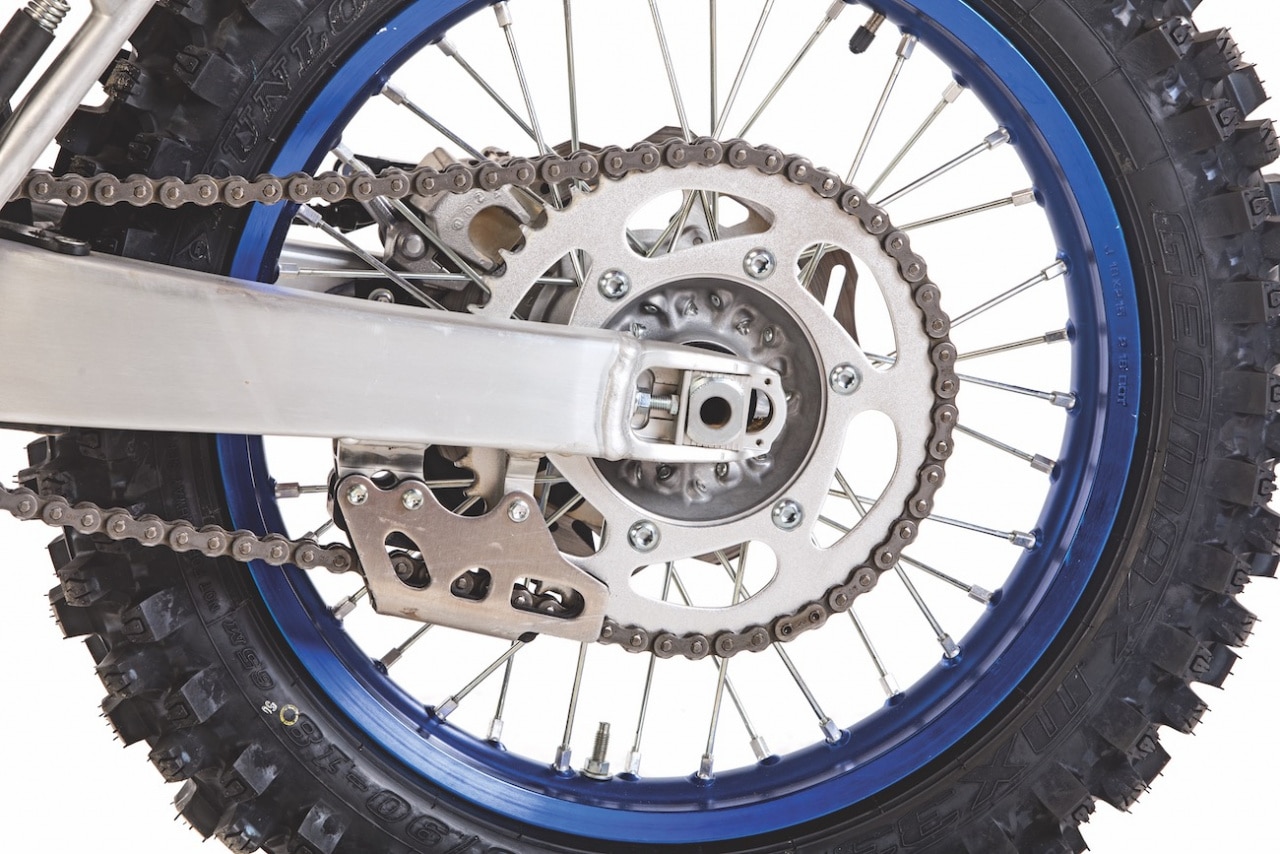

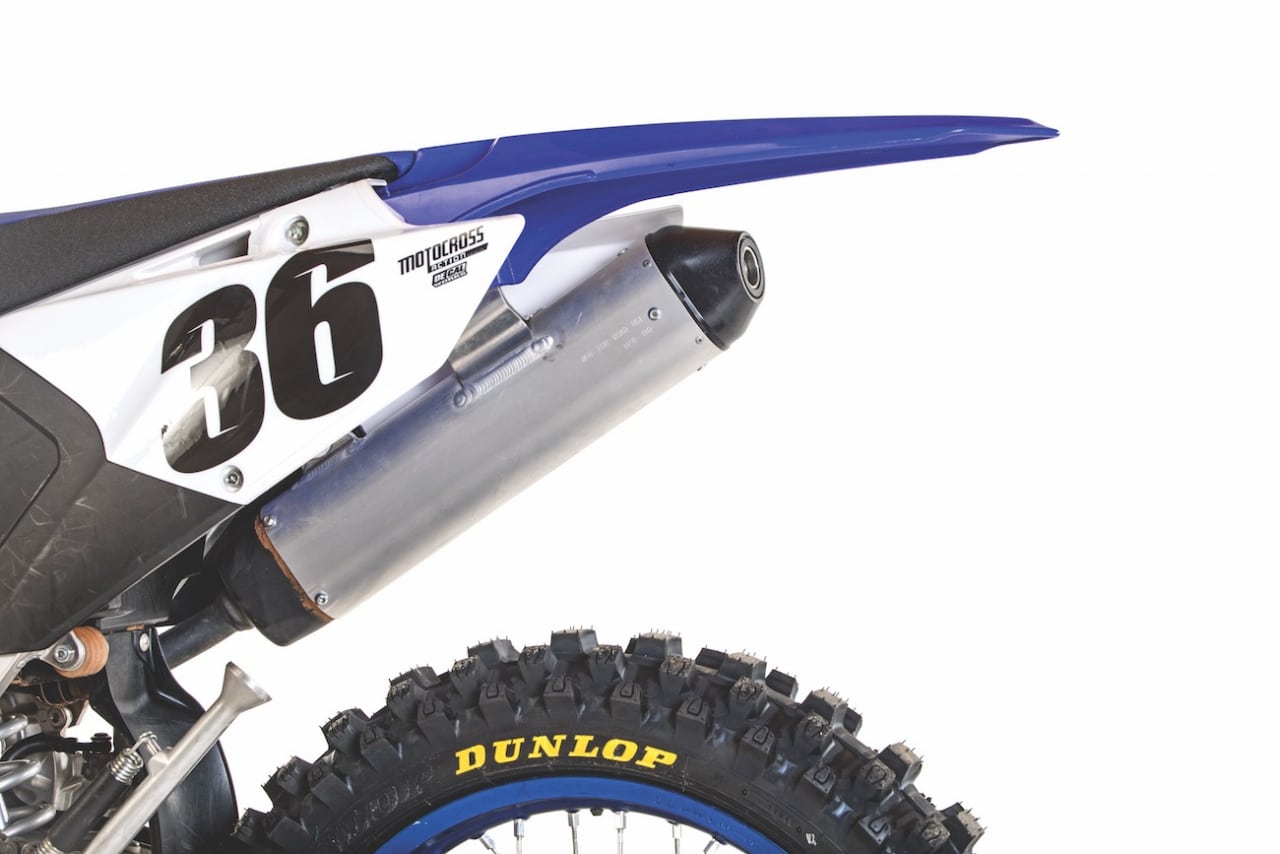


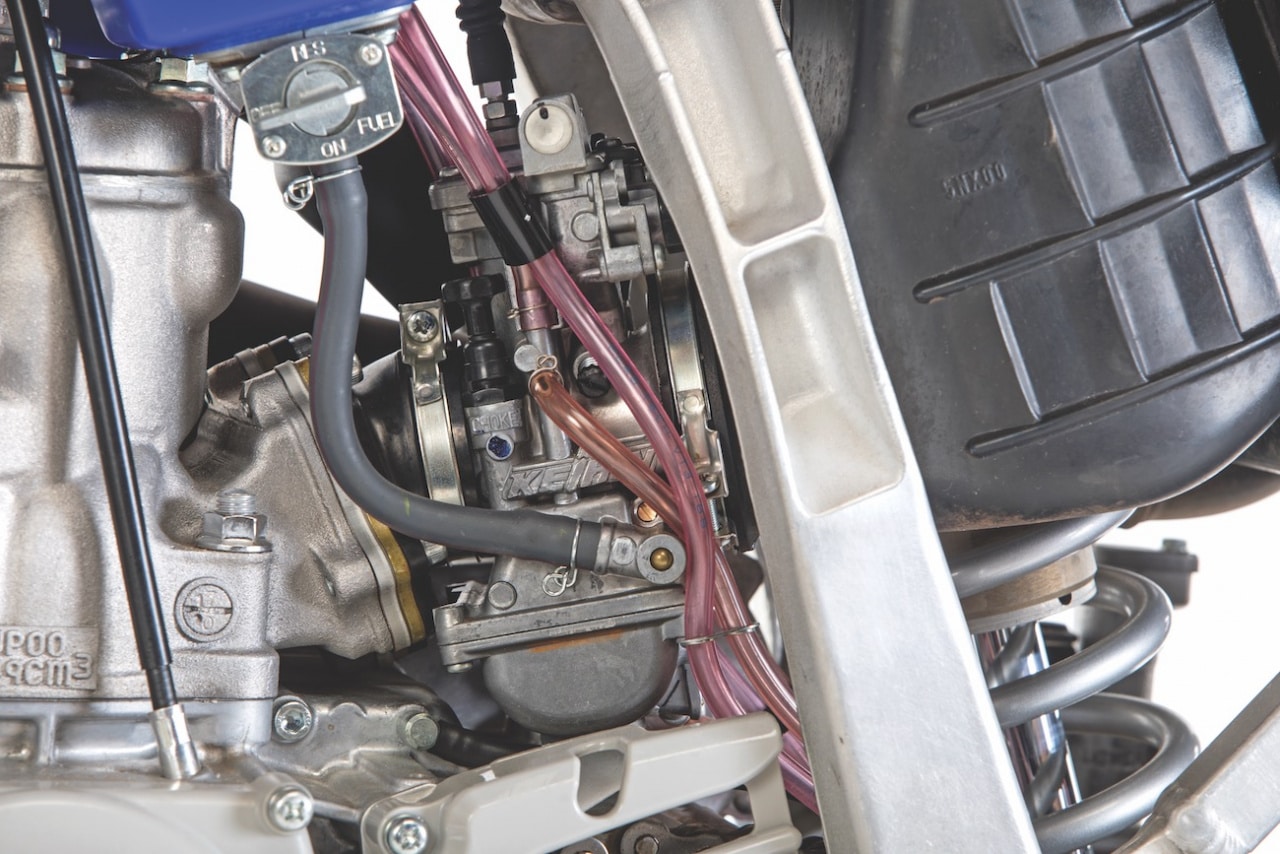



Comments are closed.